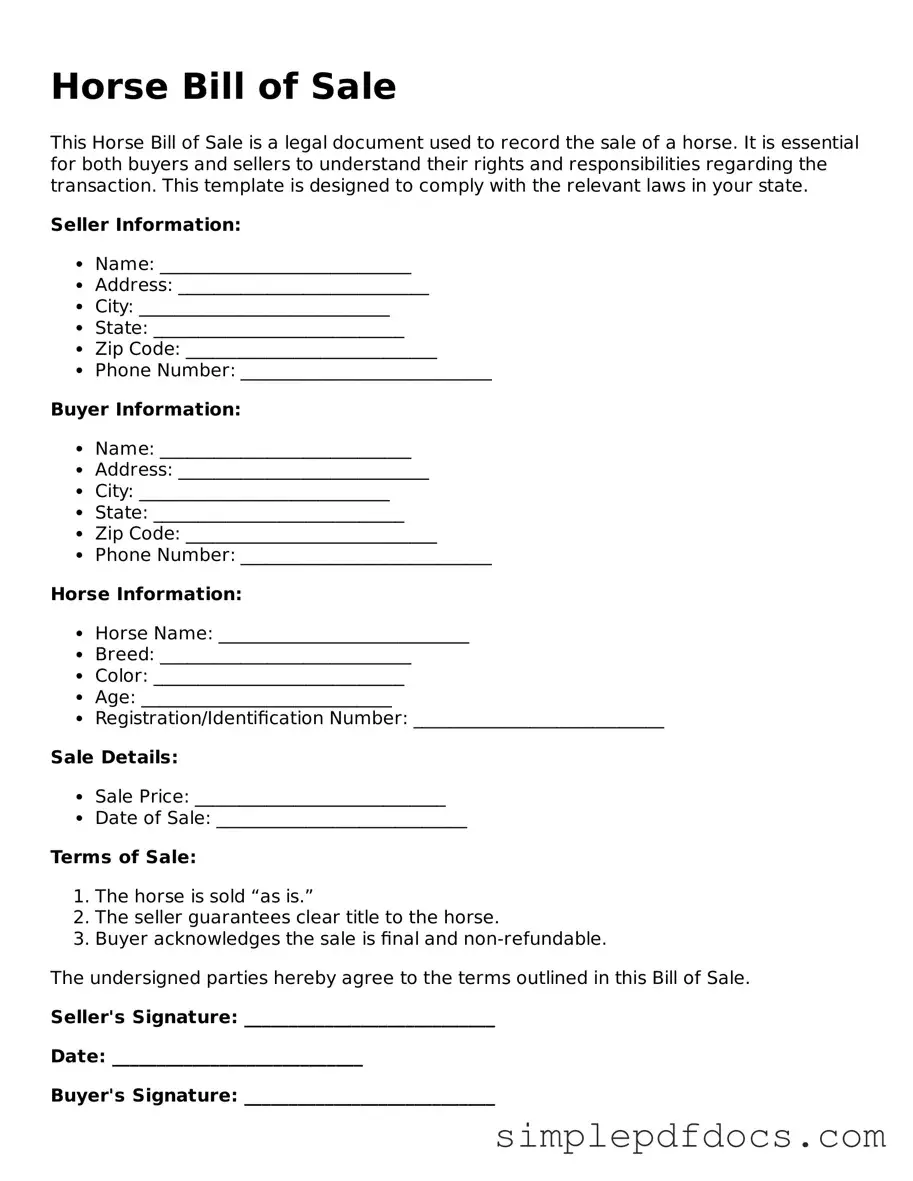Attorney-Approved Horse Bill of Sale Form
A Horse Bill of Sale form is a legal document that serves as proof of the sale and transfer of ownership of a horse from one party to another. This form outlines essential details such as the horse's identification, sale price, and the terms of the transaction. Utilizing this document helps protect both the buyer and seller by providing a clear record of the agreement.
Get Document Here
